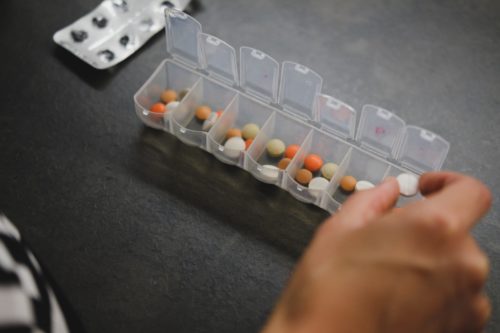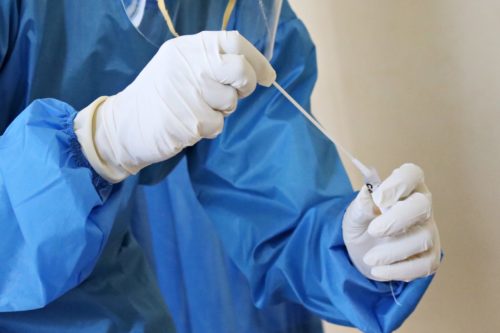
Abstract:
The collaborative care model (CCM) is an improved method to manage patients with opioid use disorder (OUD). Historically OUD treatment was the purview of psychiatrists and addiction specialist. Medications for OUD (MOUD) could only be started with access psychiatric department or addiction clinic. Buprenorphine as MOUD and emergence of CCM, significantly expands access to life saving medication, engages patients and medical professionals, and normalizes MOUD as part of standard medical therapy in family medicine, internal medicine, and emergency medicine settings. Widespread adoption of this model would improve care in diverse healthcare settings, expand access, and save lives.
Introduction
Patients with opioid use disorder (OUD) have a high risk of multi-substance abuse, psychiatric disorders, infectious disease, and multiple chronic medical disorders. OUD contributes to higher overdose occurrence and all-cause mortality.[1] Treating OUD is challenging, especially among patients with a long history of OUD contributing to higher risk of opioid withdrawal and fatal overdose. In recent years, we started to see a decrease in opioid overdose occurrence and mortality among patients using buprenorphine.[2] Though the treatment is effective barriers pose significant challenges to initiate buprenorphine for MOUD.[3, 4] We read with great interest the study by Brackett CD et al.,[5] who reported the efficacy of using the collaborative care model (CCM) for buprenorphine treatment among OUD patients.
In the past, patients with OUD were generally managed by psychiatrists.[1] OUD often relied on formal evaluation by a psychiatrist prior to initiating treatment. This was due to high psychosocial risks and barriers to prescribing Buprenorphine. Other specialties were passive participants. The emergence of buprenorphine within CCM provides an improved patient-provider engagement model and thus transitioned MOUD from passive to active participation in multiple settings.[5] With family, internal, and emergency medicine involvement, patients have improved access to MOUD integrated with comprehensive, general and emergent healthcare.[5] Expanding CCM to include the Emergency Department (ED) provides unscheduled initiation at critical times of withdrawal and non-fatal overdose .[6, 7] Many ED-initiated buprenorphine treatments protocols for MOUD have been reported. We eagerly await outcomes from the latest studies expanding emergent access to MOUD.[8, 9]
Our institution is a publicly funded hospital with numerous OUD patients. These patients lack healthcare access/engagement due to barriers such as low socioeconomic status, limited community access, and prolonged waiting time to scheduled care. When seeking healthcare, such patients often seek care in the ED rather than a primary medical home. In 2020, with the support of SAMSHA (Substance Abuse and Mental Health Services Administration), our hospital system has initiated buprenorphine treatment at ED. On January 14, 2021, HHS (Health and Human Services) issued an exemption to the X-waiver requirement for physicians with the DEA (Drug Enforcement Administration) to prescribe buprenorphine. This exemption decreases barriers for
physicians to initiate and prescribe buprenorphine treatment for OUD. Following models developed at Yale and CA Bridge,[10] after patients evaluated and treated in the ED, care is transitioned to a “bridge clinic” in our urgent care center for short duration until patients can further transitioned to receive ongoing treatment through addiction, primary care, psychiatric care, or street medicine clinics. “Bridge” patients are staffed by combinations of ED, family, and psychiatric providers, an excellent example of CCM. It is challenging to transition patient care seamlessly from ED to clinic settings, especially in a public-funded hospital system, for a population with multiple barriers to access. The benefit of the bridge clinics is filling the gap and allowing patients to receive continuous care after ED discharge. Our program started enrollment in January 2021. We have already enrolled 50+ unique patients with “bridge” follow up rate of 84%. We continue to have steady growth in patient enrollment. We will report study outcome measures (e.g., patient registration, retention rate, relapse, etc.) in the future.
Diverse outcome measures can be reported on OUD patients with buprenorphine treatments. Though the authors reported number of patient enrollment and patient retention rates in Brackett CD et al.’s study, readers might be more interested in patient care outcomes. What is the occurrence rate of opioid overdose among all these enrolled patients, any difference in terms of mortality between patients who enrolled in buprenorphine treatments within CCM versus ones not? How satisfied buprenorphine treatments are among enrolled patients? We understand the challenge of collecting all this information and hope that the various outcome measures can be reported in the future.
References
1. Volkow ND, Jones EB, Einstein EB, Wargo EM. Prevention and Treatment of Opioid Misuse and Addiction: A Review. JAMA Psychiatry 2019; 76(2):208-216.
2. Ma J, Bao YP, Wang RJ, Su MF, Liu MX, Li JQ, et al. Effects of medication-assisted treatment on mortality among opioids users: a systematic review and meta-analysis. Mol Psychiatry 2019; 24(12):1868-1883.
3. Hoffman KA, Ponce TJ, McCarty D. Opioid use disorder and treatment: challenges and opportunities. BMC Health Serv Res 2019; 19(1):884.
4. Martin SA, Chiodo LM, Bosse JD, Wilson A. The Next Stage of Buprenorphine Care for Opioid Use Disorder. Ann Intern Med 2018; 169(9):628-635.
5. Brackett CD, Duncan M, Wagner JF, Fineberg L, Kraft S. Multidisciplinary treatment of opioid use disorder in primary care using the collaborative care model. Subst Abus 2021:1-5.
6. Walter LA, Li L, Rodgers JB, Hess JJ, Skains RM, Delaney MC, et al. Development of an Emergency Department-Based Intervention to Expand Access to Medications for Opioid Use
Disorder in a Medicaid Nonexpansion Setting: Protocol for Engagement and Community Collaboration. JMIR Res Protoc 2021; 10(4):e18734.
7. Sokol R, Tammaro E, Kim JY, Stopka TJ. Linking MATTERS: Barriers and Facilitators to Implementing Emergency Department-Initiated Buprenorphine-Naloxone in Patients with Opioid Use Disorder and Linkage to Long-Term Care. Subst Use Misuse 2021; 56(7):1045-1053.
8. Hawk KF, D’Onofrio G, Chawarski MC, O’Connor PG, Cowan E, Lyons MS, et al. Barriers and Facilitators to Clinician Readiness to Provide Emergency Department-Initiated Buprenorphine. JAMA Netw Open 2020; 3(5):e204561.
9. Fockele CE, Duber HC, Finegood B, Morse SC, Whiteside LK. Improving transitions of care for patients initiated on buprenorphine for opioid use disorder from the emergency departments in King County, Washington. J Am Coll Emerg Physicians Open 2021; 2(2):e12408.
10. D’Onofrio G, O’Connor PG, Pantalon MV, Chawarski MC, Busch SH, Owens PH, et al. Emergency department-initiated buprenorphine/naloxone treatment for opioid dependence: a randomized clinical trial. JAMA 2015; 313(16):1636-1644.



This Post Has 0 Comments